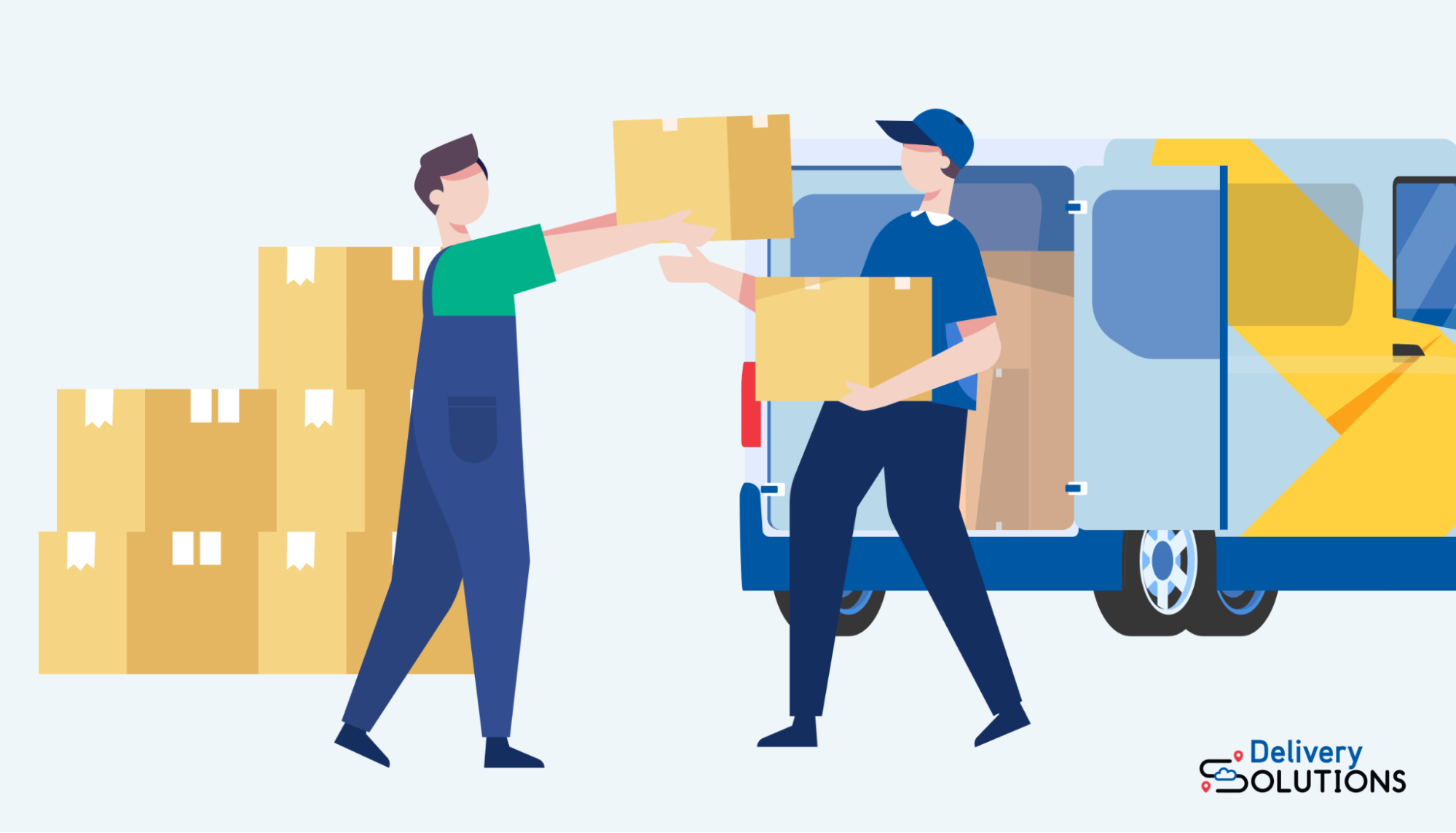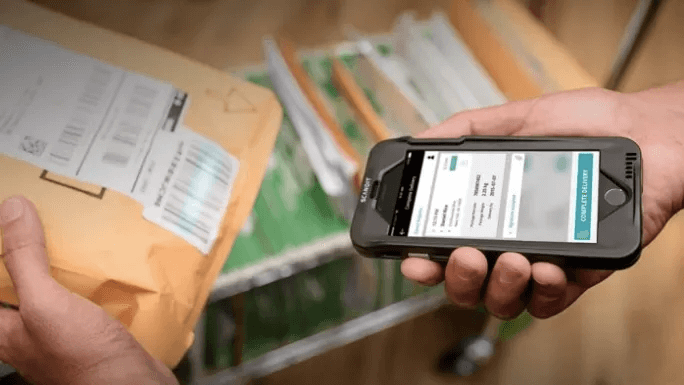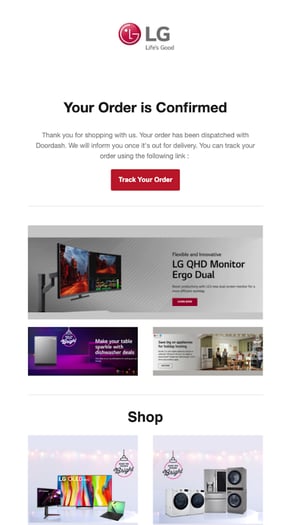“Where’s my order?”
Whether they’ve purchased clothes or electronics, this is what customers want to know. And it’s no longer enough for businesses to simply answer “on the way.”
With the innovations of Uber, DoorDash, and other technologies, customers now expect to know exactly where their order is and when it will arrive. When asked about receiving accurate delivery information, 82% said their expectations were high or “very high.”
This evolution is driving more and more companies to implement or improve their last mile delivery tracking. But the customer isn’t the only one who benefits. Fast and accurate last mile delivery tracking also provides vital information for merchants.
In this article, we’ll cover what last mile delivery tracking is and how it works in real delivery situations. We’ll explain how it benefits both customers and retailers, as well as what technology you’ll need.
What is last mile delivery tracking?
Last mile delivery tracking refers to tracking where an order is in the final leg of delivery. In shipping and logistics, the “last mile” refers to the last leg of the shipping journey, where a package goes from a local warehouse or shipping center to its final destination.
In the world of ecommerce and shipping, tracking is how the company keeps track of where the package is (both geographically and in the delivery process). Last mile delivery tracking monitors and communicates where an order is.
Today, customers expect a high level of visibility and communication from retailers. That’s why tracking has also come to involve how the company communicates with the customer about their order. Many customers now expect to know the estimated delivery time, the package's geographical location, and even what carrier is handling last mile delivery.
What is a last mile carrier?
A last mile carrier is the shipping or delivery business that performs the final delivery stage, bringing it to the customer’s mailbox or doorstep. It’s not uncommon for ecommerce and other companies to use multiple shipping partners or carriers. That’s why the last mile carrier might differ from the carrier at other points.

Because the last mile of delivery requires a lot of human labor and many individual stops, certain carriers specialize in this leg of the journey. They use routing technology and even autonomous vehicles to optimize the process for efficiency and reduce cost.
Why is last mile delivery tracking important?
Last mile delivery tracking is important to both the customer and the business.
Customers now expect frequent updates on the status of their orders. In fact, 9 in 10 consumers track their packages. Another 20% check the status of their orders multiple times per day. When asked how they would personalize the shipping experience, 74% said real-time tracking would be the most important perk.
![]()
As convenient as online shopping and home delivery are, consumers miss out on the more tactile experiences of shopping: picking up the item, trying it on, and walking away with their new purchase.
Last mile carrier tracking gives customers a sense of control and security, and it can even build anticipation. On a practical level, however, it can also help them plan to be home if they need to accept the package personally. If the delivery is time-sensitive, tracking is even more important.
But last mile carrier tracking is also important for businesses to ensure orders arrive on time and optimize order fulfillment operations and avoid delays and loss. The delivery of a product is part of the customer experience and can make a big difference in customer satisfaction. That's why businesses have a vested interest in tracking and monitoring last mile delivery.
How does last mile delivery tracking work?
Tracking a package begins when the order is processed and the fulfillment team creates a scannable barcode. The barcode is the unique identity of the package and is linked to all its important information (recipient, address, date promised, etc.). After the products are packed, the barcode label is applied to the package.

Each time the package is accepted by a courier or shipping provider, the barcode is scanned. The scans confirm where the package is, as well as what shipping partner is currently responsible for it. A package may be scanned multiple times from one shipping hub to another.
Last mile delivery tracking begins when the package is handed off to the final mile carrier, the company that will ensure the order reaches its destination. The last mile courier is typically tracked by GPS (Global Positioning System).
Delivery Solutions partners with final mile delivery couriers to give customers an engaging post-purchase interface to watch their orders get closer and closer.
![]()
The final step of last-mile tracking is proof of delivery. It confirms to the seller and buyer that the package has been delivered. Some orders require a recipient’s signature, and effective last-mile tracking and communication ensure the customer is there to accept the package. Other last mile couriers get proof of delivery by taking pictures of the package at its destination. Even if the customer isn’t actively tracking the order, it’s now best practice to send confirmation of delivery.
How to deliver tracking information to customers
Businesses need tracking info to understand and optimize their operations, but they also need to communicate tracking info with customers. Providing information through the right channels can significantly impact customer engagement and satisfaction.
These days, a confirmation email is expected. Still, it’s also common to send email notifications when a package has shipped and even a message saying “Your package will arrive today.” The prevalence of tracking emails means your last mile tracking technology needs to connect with your email technology. Delivery Solutions, for example, allows businesses to trigger emails based on the order status automatically.

Getting customers' attention from their inboxes can sometimes be difficult. Text messages (or SMS alerts) are an increasingly common way businesses update customers on their orders. In fact, 38% of customers said they would prefer text updates over email. That’s why Delivery Solutions customers can also set up automatic triggers for SMS messages.
Businesses should note that, whether through email or SMS, customers also want to know about delays to their orders. One study found that 69.7% would be less likely to return to a retailer that doesn’t notify them when a package is delayed.
Although proactive communication through email and text is very common, many ecommerce businesses also have a dedicated order status or tracking page that customers can visit. If the customer receives an email update, it usually has a link to the tracking page, where they can view the current order status and the full order history.
Delivery Solutions provides you with a white-labeled interface with order history, as well as a map showing where the package is in real time.
![]()
All this tracking and communication is to create a better customer experience. But collecting feedback on that experience is also part of the post-purchase journey. Uber, for example, asks customers to rate each ride they take. In the case of order deliveries, it can help businesses identify problems with last mile carriers. Many businesses use automated emails or texts to deliver links to feedback surveys.
Last mile delivery tracking technology
As we mentioned, barcode scanning is vital to final mile delivery tracking and has been used for consumer purchases since the 1970s. The fundamental technology remains, but portable handheld scanners and smartphones now make it easier to track orders more closely.
GPS is another essential technology. With smartphones and professional courier fleets, today’s customers can find out exactly how far away their order is (geographically or in terms of time).
![]()
Ecommerce stores have a few choices when it comes to how they track last mile delivery. You can use the tracking system of an individual courier, such as UPS. These last mile couriers have an expansive tracking system, so you can refer customers to their website. Large businesses, like Amazon, can build their own system, but that option is very expensive and time-consuming.
For most retailers, tools like Delivery Solutions are a better option. Delivery Solutions’ Omnichannel Experience Management (OXM) platform can connect you with multiple carriers and provide updates for both you and your customers in an intuitive digital interface.
When choosing last mile delivery tracking technology, you should also consider how well it integrates with your software and tools. Look for a solution that provides accurate visibility and easy-to-understand peace of mind for your customers.
Choosing a last mile delivery partner
Since delivery is part of the customer experience, businesses should choose their last mile couriers carefully. The choice is complicated, however, by the fact that different carriers have different specialties, different hubs, different fleets, and different services.
UPS, FedEx, and the United States Postal Service are the three best-known carriers. They’re popular among retailers and ecommerce stores for their speed and reliability. All three offer next-day delivery.
No longer a novelty, same-day delivery of consumer goods is available through many providers. Uber, Instacart, and Shipt are some of the most popular services.
Many businesses struggle with choosing a last mile delivery carrier because their delivery needs vary. For instance, UPS might work for most orders, but if you want to offer same-day delivery, you may need to look elsewhere. But that doesn’t have to mean orchestrating partnerships and technology integrations with tons of partners.
Delivery Solutions gives retailers more flexibility and choice with the OXM platform. Our customers can access and use all the shipping providers mentioned above (and dozens more) because we’ve already forged partnerships with them. Through Delivery Solutions, businesses can access many delivery options without all the red tape.
Top-notch tracking for businesses and customers
Most businesses now understand that they’re not just selling a product; they’re selling an experience. And last mile delivery is a big part of that customer experience. Rising customer expectations means that even small businesses need to provide visibility into the fulfillment process.
Last mile delivery tracking lets you provide the crucial information that today’s customers expect. It also gives your business insight into the fulfillment and shipping process and how it can be improved. Look for a tool like Delivery Solutions to connect you with carriers and provide automatic communications to your customers.
Want to see how Delivery Solutions can benefit your business and your customers? Schedule a demo today.
Ryan Caldarone
Ryan is a Sr. Digital Marketing Manager with over ten years of experience in B2B eCommerce, specializing in brand storytelling and content. Having contributed to hundreds of creative projects for SMBs and startups across the tech, energy, and fine arts sectors, Ryan brings diverse perspectives.
Topics from this blog: Delivery